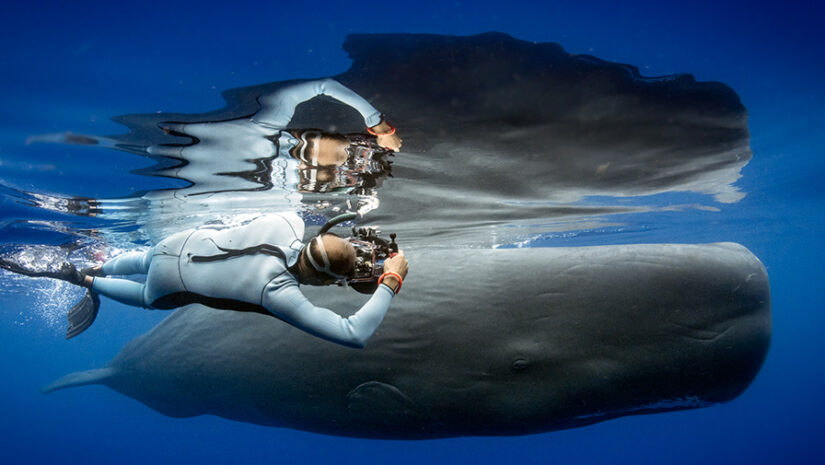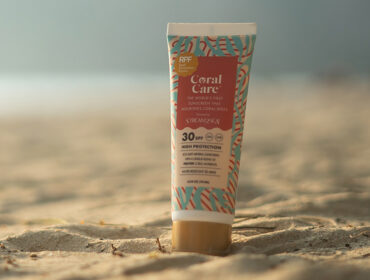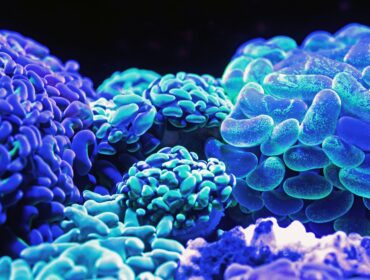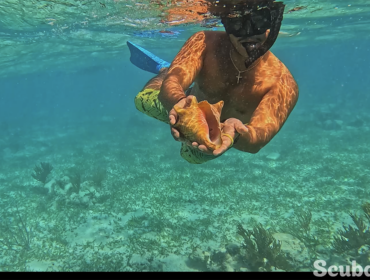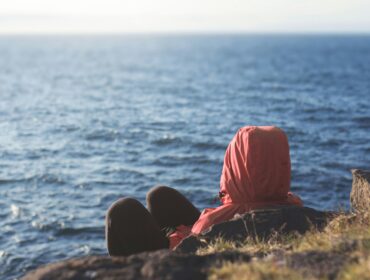The kelp sashayed around me, with schools of pink maomao darting to and froe—yet despite this smorgasbord of underwater scenery, my eyes were locked on the humans in front of me. Renowned marine photographer Jay Clue was directing underwater models as part of a production shoot with PADI—a shoot I’d snagged an invite to as a journalist—and he offered me the chance to watch his process unfold. I was mind-blown.
I’ve long been a land-based photographer, but this week with global dive-training organization PADI and Dive! Tutukaka, a conservation-centered scuba outfitter on New Zealand’s North Island, showed me the power of marine conservation photography. It also opened my eyes to how much I had to learn—and few can teach this craft like Clue, an award-winning underwater photographer who runs workshops on the subject around the world.
After our week of diving the Poor Knights Islands, one of the most impressive (and scenic) conservation success stories in New Zealand, I sat down with Clue to learn more about his backstory: how he got started, how he found mastery, and how newbies, like me, can hone the art of underwater photography, then use that craft for good.
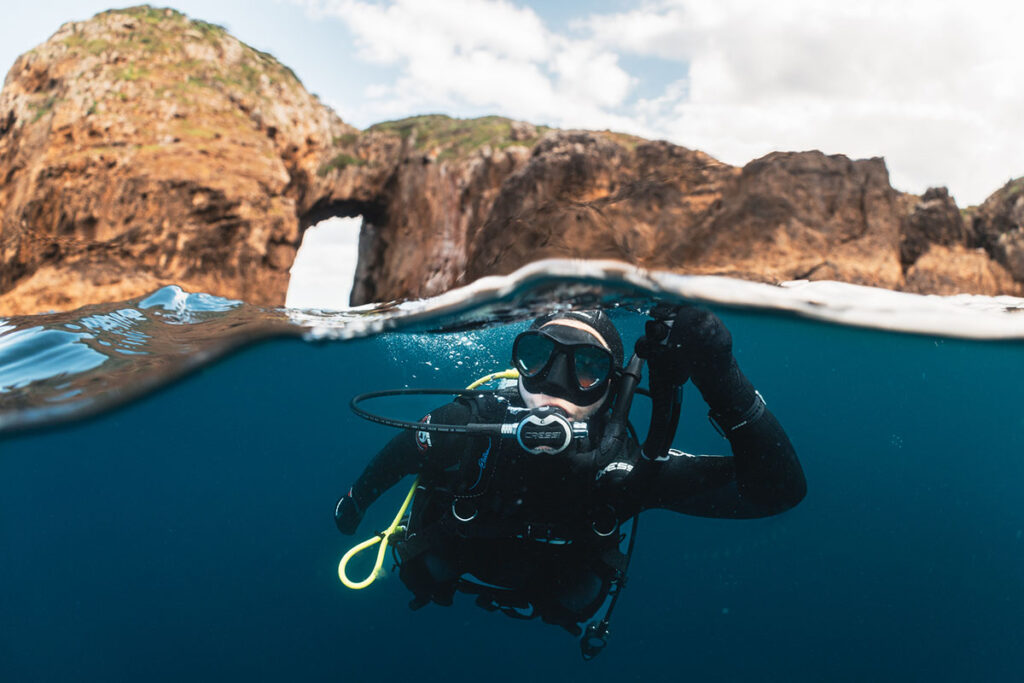

Clue’s winding path from fashion to photography
Today, Clue is synonymous with underwater photography, but it wasn’t always that way. Originally, he pursued a career in fashion design. He quickly learned that wasn’t right, then shifted gears. “I quit and had a kind of existential crisis,” he says. “I just felt like I wasn’t supposed to be there.”
After that, he worked a hodgepodge of jobs, from driving trucks and construction to eventually falling into freelance graphic design. He worked in advertising for major brands, then went back to school to pursue a Master’s degree in London. That hop across the pond included a dip into the world of diving.
“I fell in love with it, and became obsessed,” he says. Clue obtained his PADI Open Water and Advanced Open Water certifications in London; within a year of his advanced training, he’d already clocked 352 dives. “A lot of those were going to quarries or places people didn’t really want to dive, but I was so obsessed, I would take every chance I could get.”
This fascination with the undersea world led him to another major career and life change. He left London, and school, to work in the ocean. He eventually launched an ecotourism dive shop in Mexico, and that’s where his foray into photography first began.
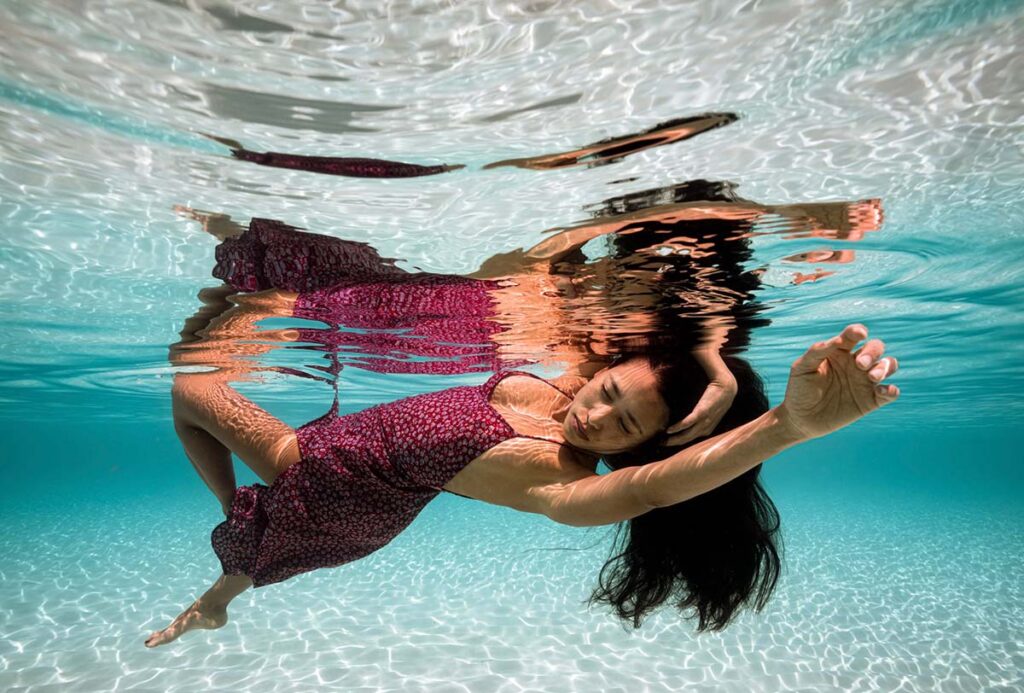
Dabbling into underwater imagery
Clue went out on the water for work constantly, experiencing one-of-a-kind marine sights few get the chance to see. He felt called to share this beauty with the world—and photography seemed like the perfect fit. There was only one problem: he didn’t own a camera, let alone know how to operate one.
“I went out and got myself a compact camera and started playing with it,” he says. “I was horrible, I was running around on auto mode and just smashing buttons, praying I would make amazing photos, then hating myself because I wasn’t.”
His girlfriend at the time taught him how to use a manual, and similar to his early days of diving, Clue became obsessed. “I just kept practicing, practicing, and practicing with anything I could shoot—land, underwater, everything,” he says. “Eventually a friend of mine told me to upgrade my camera; I wasn’t going to get what I was dreaming of out of the camera I was using. I saved my pennies and upgraded to a new mirrorless camera.”
After countless hours of practice, a friend convinced him to enter a photography contest. He took first place, then placed in several other contests. This gave Clue, now a Sony photographer, the confidence to take his work more seriously. “It was time to figure out how to make money and turn this into a career.”
While turning photography into a job was important, Clue’s driving force went much deeper; he wanted to use imagery to safeguard the ocean. “All of a sudden I was seeing this beauty of the ocean again,” he says. It helped him realize how showing this splendor and biodiversity could inspire others to protect it, too.
Now, Clue fuses marine photography and conservation work with brands around the world, from publications like National Geographic and Newsweek to industry leaders like PADI—and he’s made it all happen within roughly eight years of picking up that first camera.
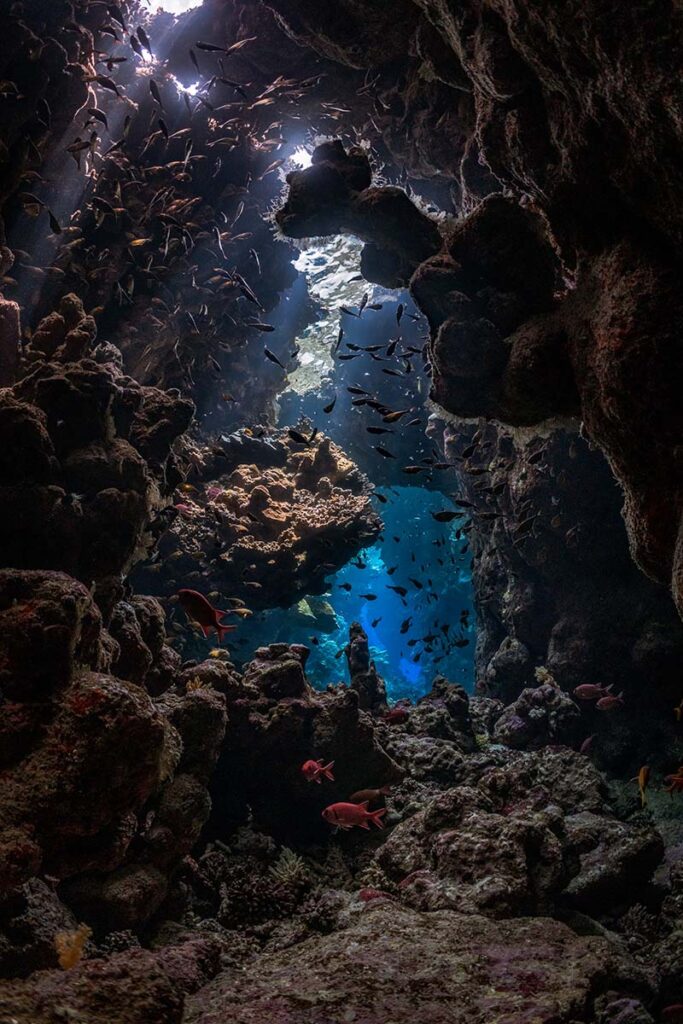
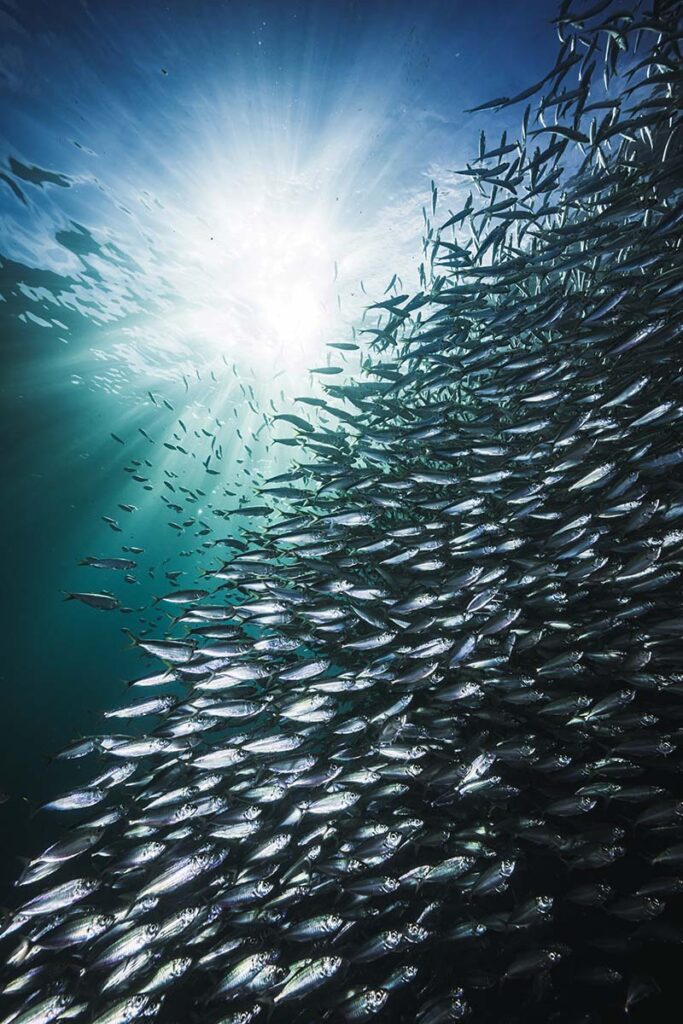
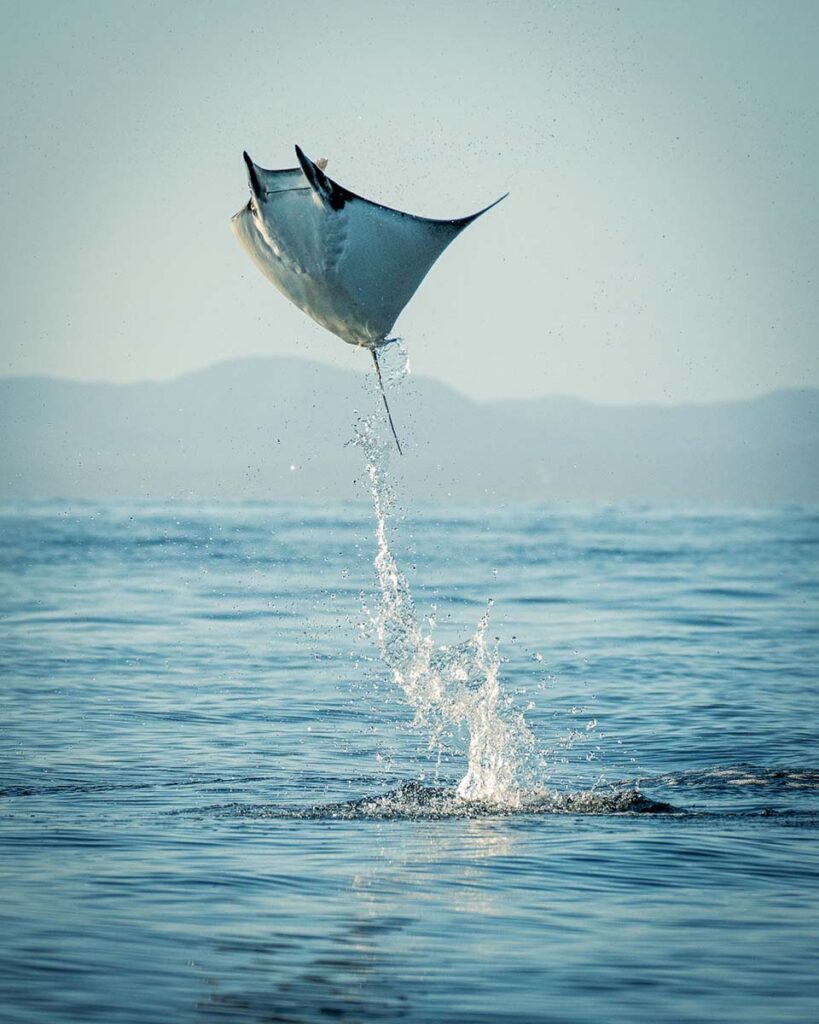
His biggest lesson? Practice—but not just photography
Clue attributes much of his quick success to that relentless drive to practice, yet he could only master underwater photography because he was comfortable diving. That’s why he always tells workshop students to hone their diving skills first.
“The most important skill is buoyancy,” Clue says. “The calmer we are underwater, the better we can think underwater, and the better we can react to an animal swimming by out of nowhere. If you’re stressing about buoyancy or equipment, you’re not able to react as quickly with your camera.” This is especially crucial in photographing marine species, as animals can pop up, and then disappear, within seconds.
Clue also suggests starting small when it comes to underwater photography gear. “Get a small camera that you can start working with while perfecting that buoyancy,” he says, noting this mastery of buoyancy isn’t just for getting the shot. “We want to make sure we’re not destroying the stuff we’re going to take pictures of. We don’t want to be smacking into the reef when we’re trying to get a photo of an animal on it.”
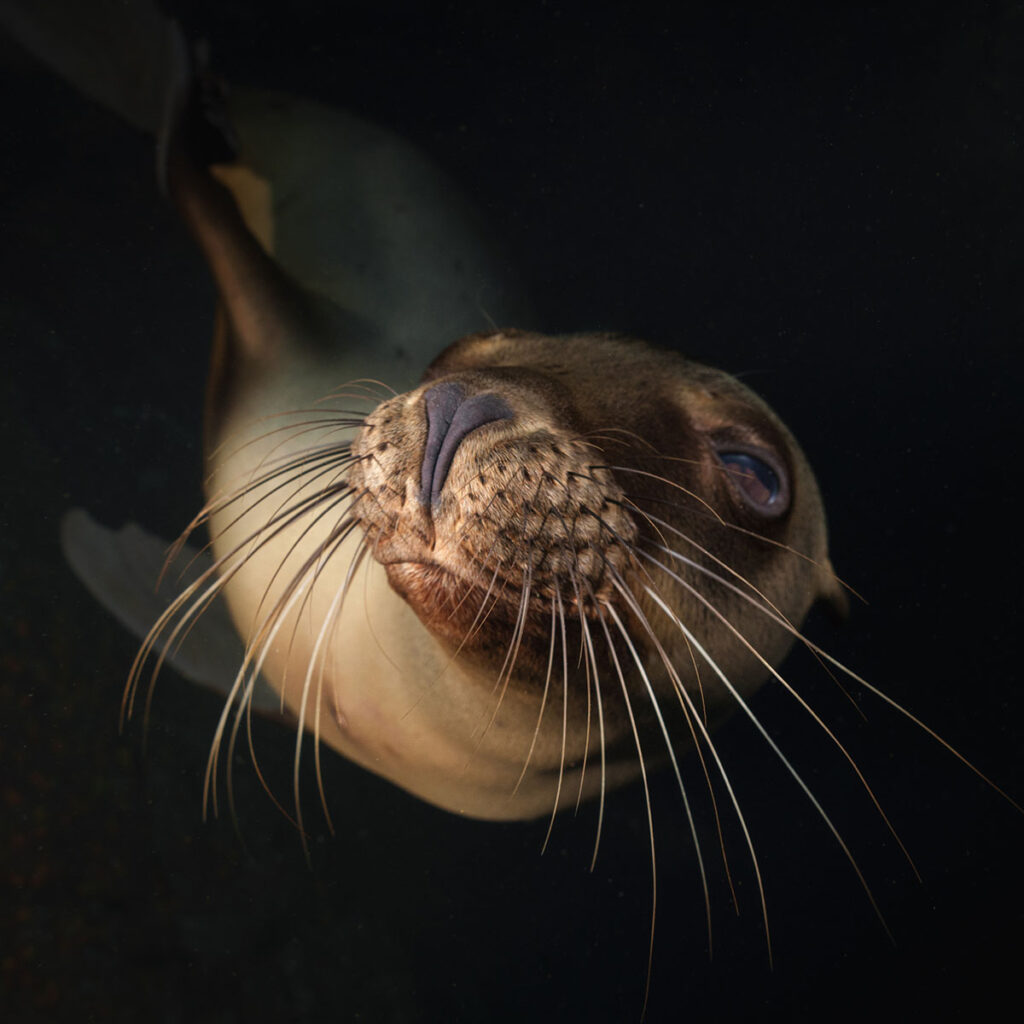
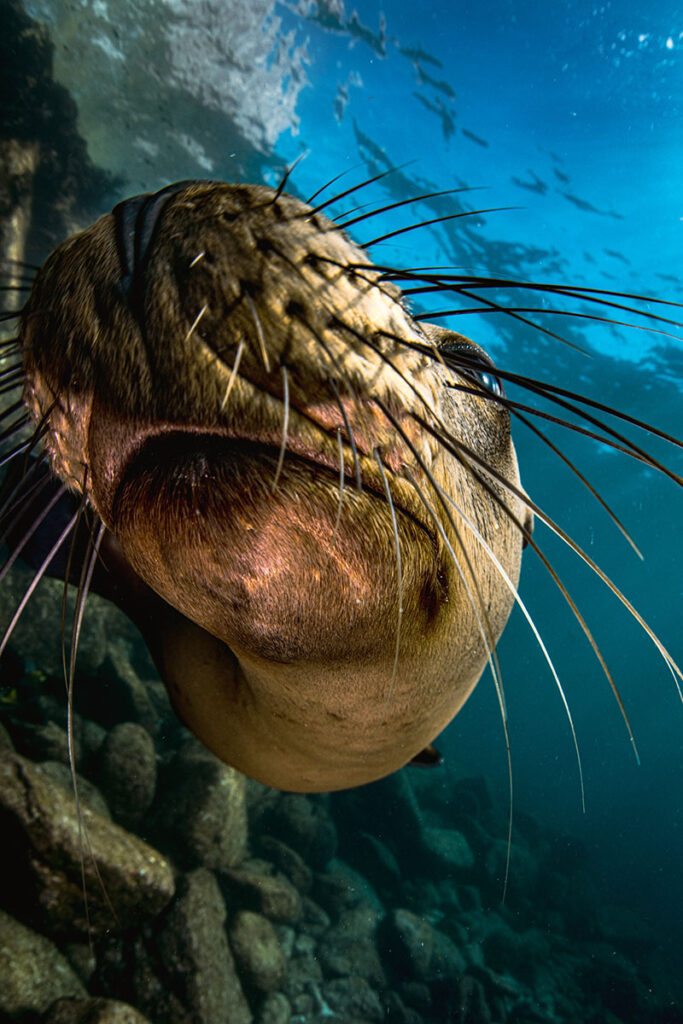
To nail the shot, know the subject
You won’t see Clue chasing after wildlife with his camera. Not only could this disturb the creature—which goes against the reason he photographs in the first place—but it also doesn’t work. Instead, he studies the animals he’s hoping to photograph so he can predict their actions and know how to respond.
“Nothing wants to be chased; there’s a reason you don’t see National Geographic photographers in the Serengeti chasing lions across the plains—it doesn’t work,” he says. “Instead, we try to understand the animal by thinking about how they’ll react, and knowing how they go about their lives. For instance, with marine life that may be prey, we don’t want to look like a predator or we’ll trigger a prey response. So we’re calm, we breathe slowly. If they don’t think you’re a predator, they’re going to be more relaxed.”
The same thing works for predator species. “We want to act a bit more like a predator so that we don’t look like prey,” he says.
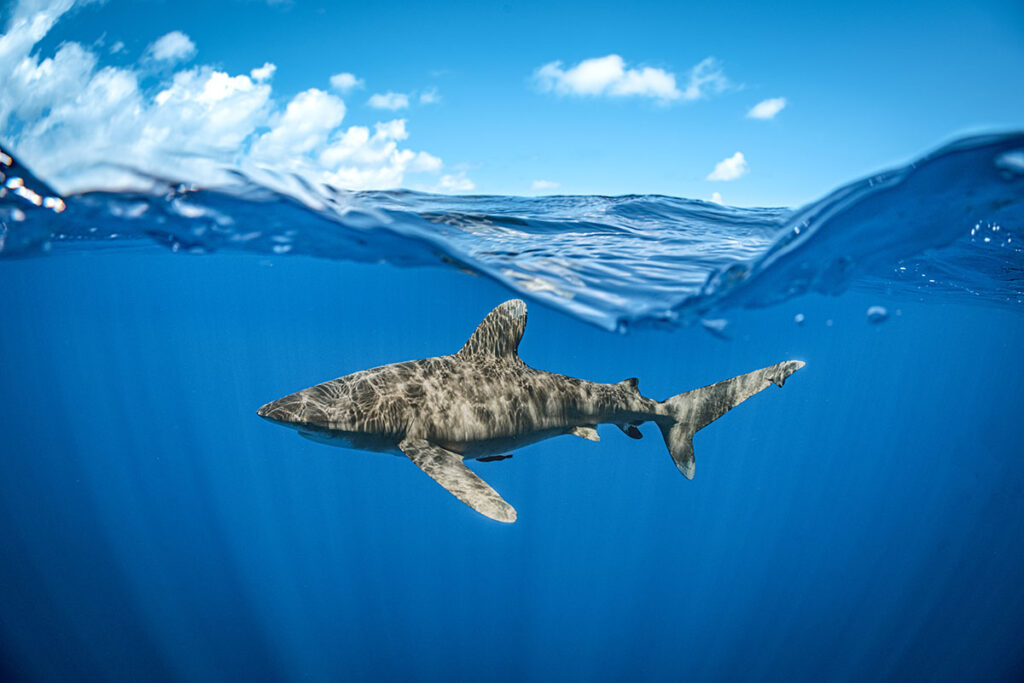
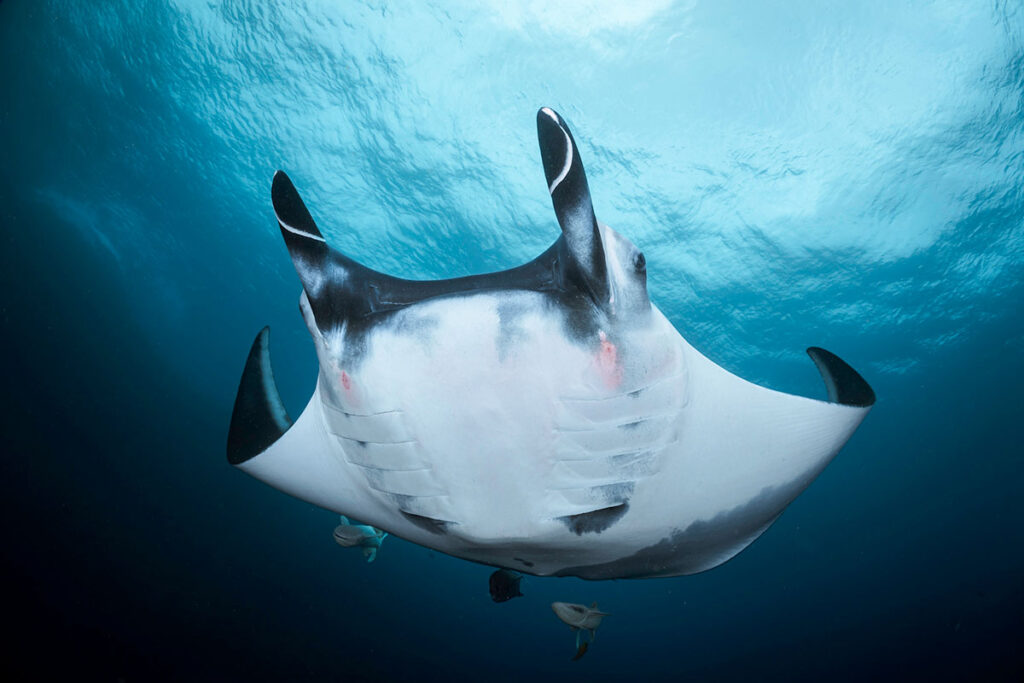

Prioritize the story above all else
Everyone may have a camera these days, but not everyone knows how to use it to tell a story. In Clue’s eyes, storytelling is what sets a pretty photo apart from a powerful one—and prioritizing storytelling has been instrumental in growing his career.
“For me, one of my defining moments was finding that I could use photography for something bigger than a pretty picture, or trying to promote a business,” he says. “Actually telling a story, and inspiring people to fall in love with and want to protect the subject, gave me purpose.”
It also helped him realize just how much his images could do. “With photography, you have the power to stop a moment in time, to show people a side of the ocean they’ve never seen,” he says. “It can transport someone who’s never seen the ocean, and inspire them to fall in love with and want to protect marine life like whales or sharks. It’s incredibly powerful.”
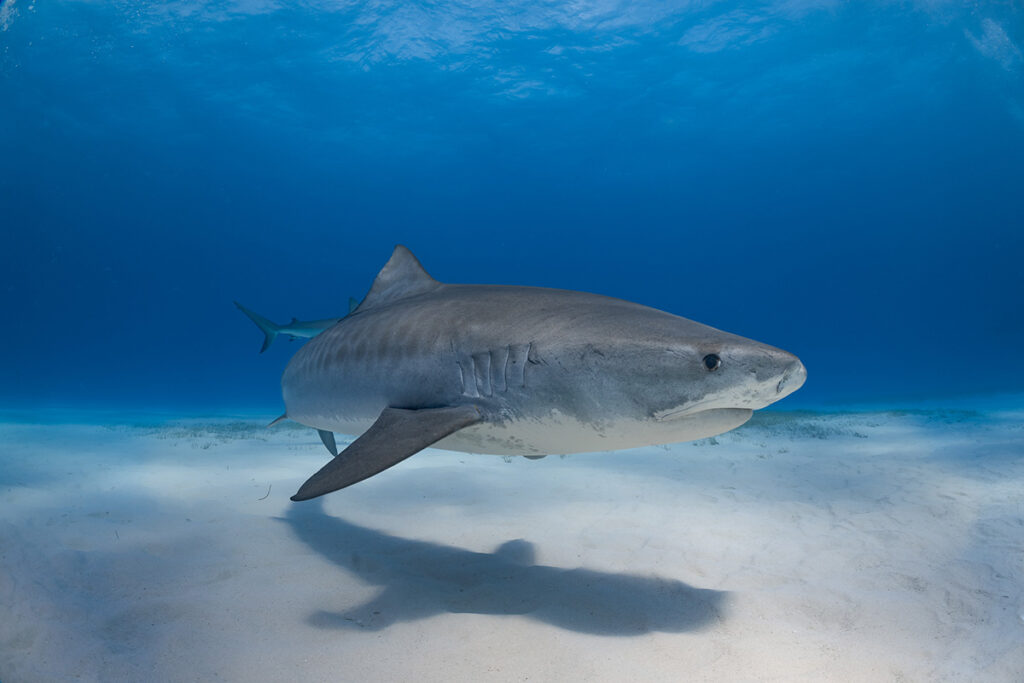
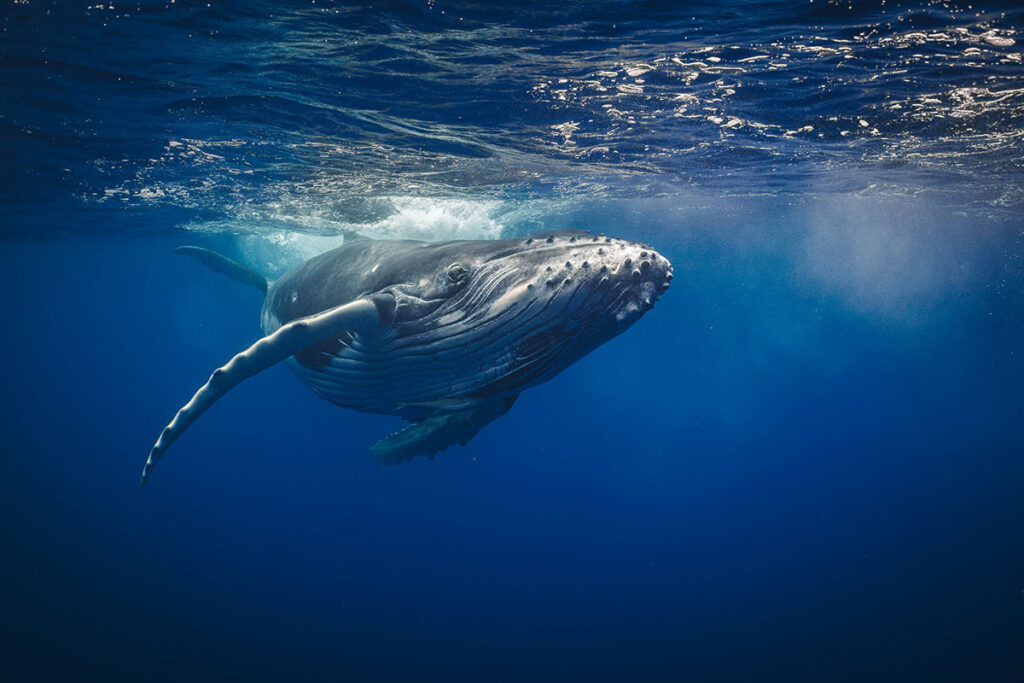
Bringing the image to life
To create a story, Clue doesn’t just hop in the water and hope for the best. He researches the backdrops and potential wildlife of the area to come up with a loose idea, knowing full well it could change entirely based on the ocean’s mood.
“It’s a very overarching idea,” he says, noting that during our New Zealand trip, for example, he was excited about the potential of framing images with the Poor Knights Islands’ signature kelp. “I’d never seen kelp like that before; I loved how it moved, and I wanted to be able to capture that. And, since it’s a PADI shoot, I also need to think about how I bring divers into that to show them interacting with it, and show the awe of feeling and seeing the kelp.”
Once he’s in the water, he assesses the scene: How is the light? What’s the swell like? How are the particulates? Then, “I fire test shots and figure out my settings to see if the idea I’m building in my head is going to work.”
Of course, this kind of slow build is easier with human models. “If you go into something with, say, a shark, you only have milliseconds to shoot it, so it’s not a slow process. I have to hit the water, see what’s going on, figure it out in a split second, then shoot. A lot of that comes with experience, and over time you get better and better at figuring it out.”
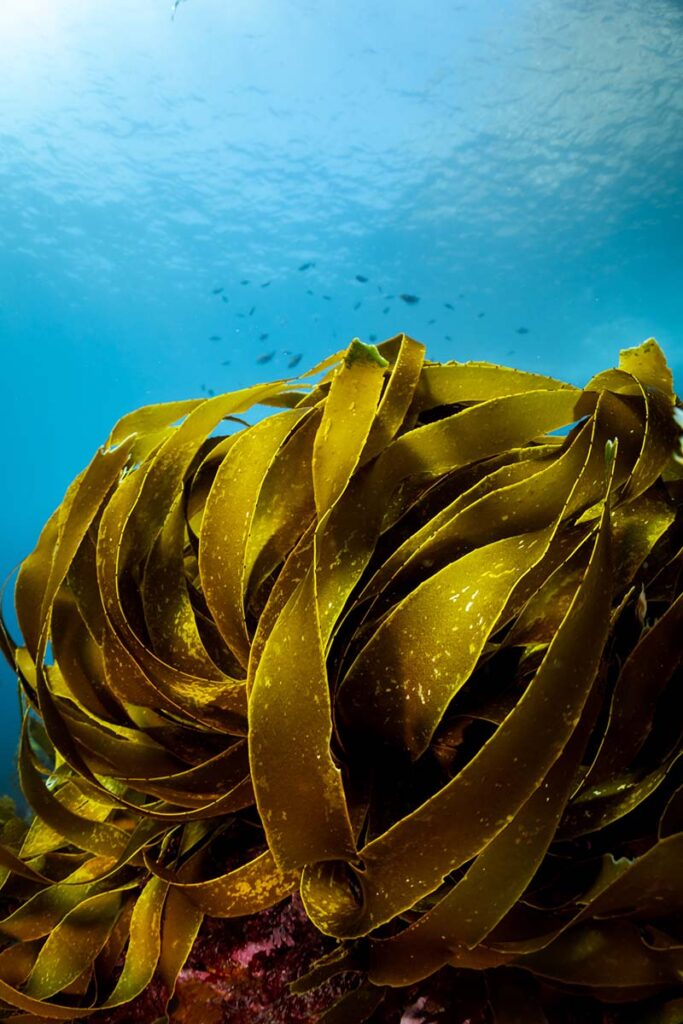
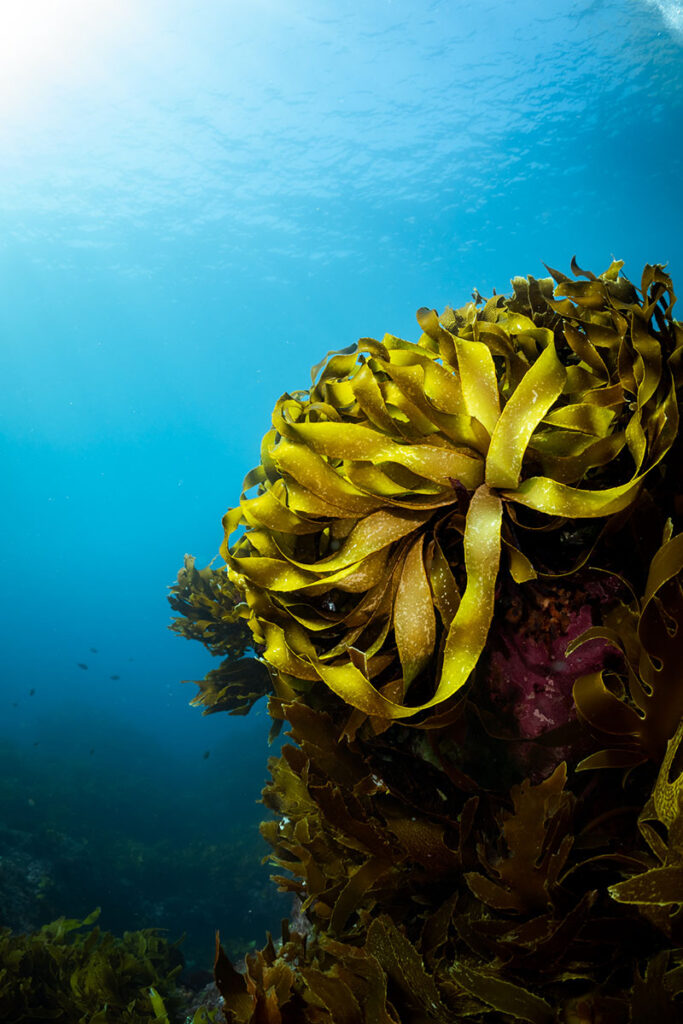

Experimenting with other forms of photography
In recent years, Clue has taken his marine photography skills on land—known in the dive world as topside—and this has expanded his capabilities underwater, too. “I’ve slowly started shooting nightscapes and landscapes and other types of photography,” he says. “This has reinvigorated my craft because what I’m learning may translate to how I shoot underwater.”
In fact, in the coming months, he’ll be experimenting with this even more. Clue is spending the second half of 2024 on a major North American road trip with a focus on capturing the continent’s beauty while experimenting with new photography styles, from the snow-laden peaks of Banff to the sun-blasted desert of southern Utah.
In between these park stops, though, Clue will dip back in the water—largely for his global underwater photography workshops, which include everything from beginner tips on choosing gear to learn about light underwater to more advanced lessons like mastering manual, using strobes and video lights, and editing marine images. (Learn more about Clue’s upcoming workshops here.)
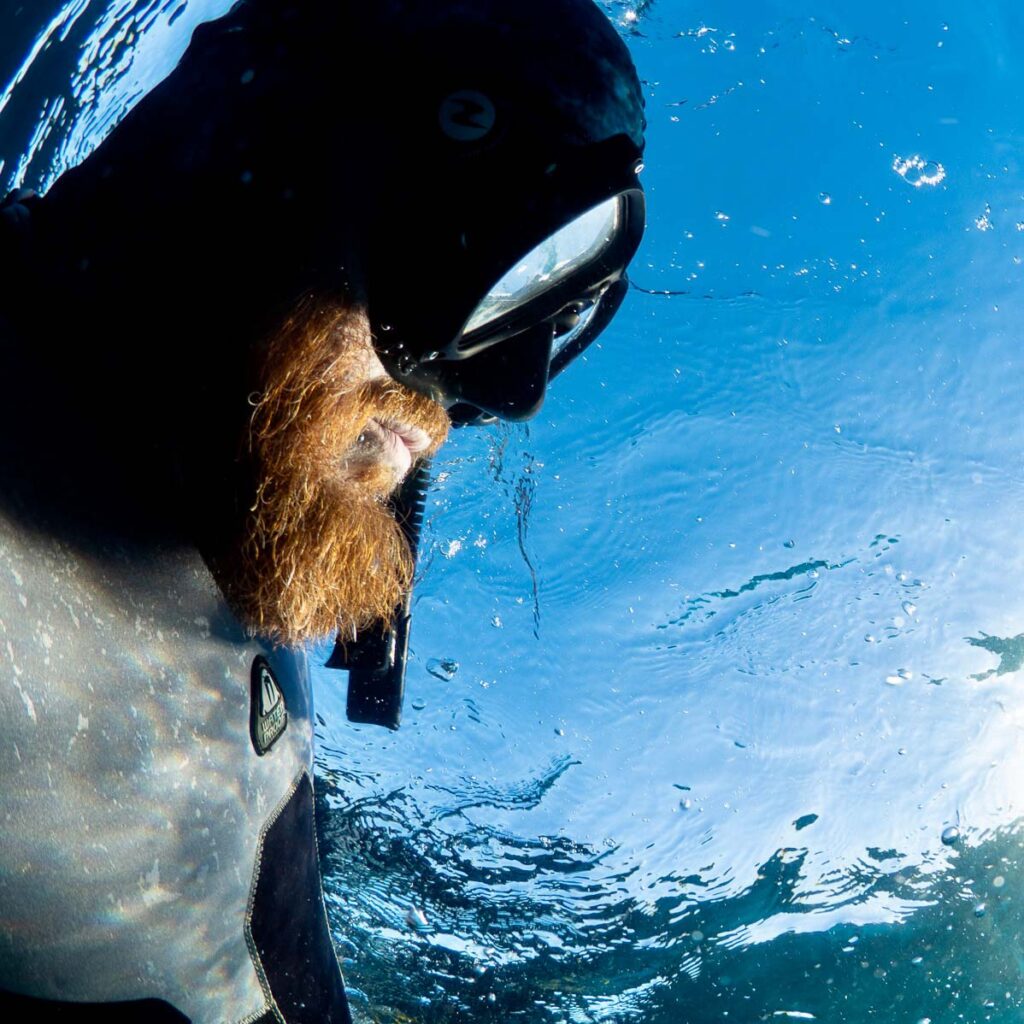
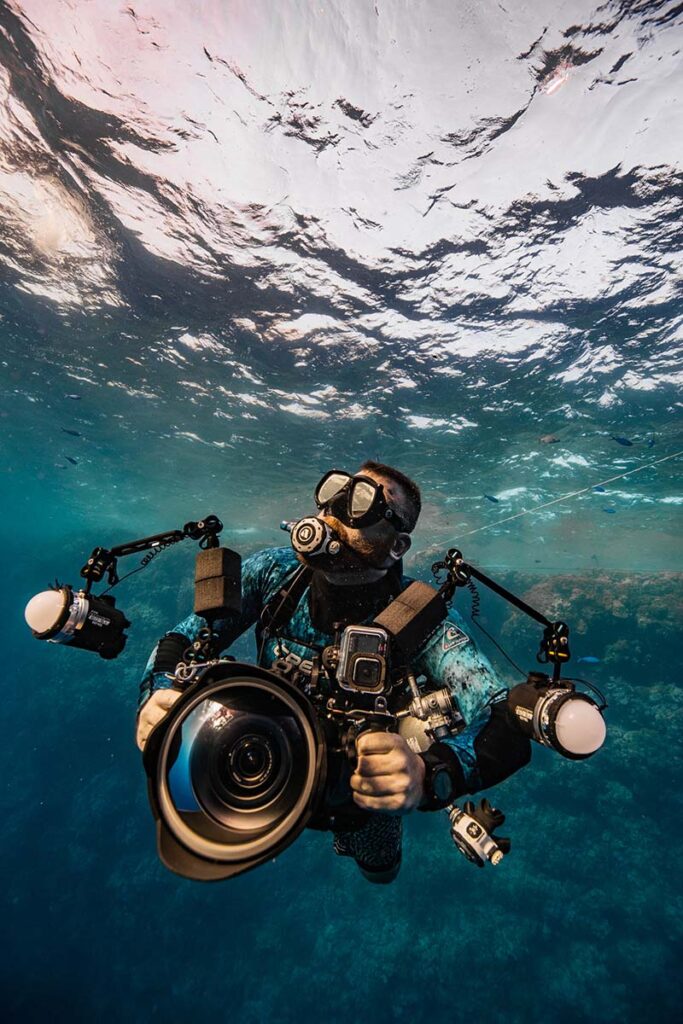

Shoot like Jay Clue
If you want to start building your kit like Clue, he shared his gear list with us below—but, note, for beginners, he suggests easy-to-use cameras like the Olympus OM-D E-M10 IV with an Octo Housing.
A look into Jay Clue’s underwater gear!
Cameras
Lenses
- Sony FE 28-60mm F4 lens
- Sony 16-35mm f2.8 G Master
- Sony 100-400mm G Master
- Sony 1.4x Teleconverter
- Sony 24-70mm f2.8 G Master II
- Sony 90mm Macro f2.8 G
Strobe Lighting
Video Lights:
Focus Lights:

Head to Clue’s website for his entire gear arsenal, including housings and lights, and follow his underwater and topside adventures, on Instagram @jayclue.

